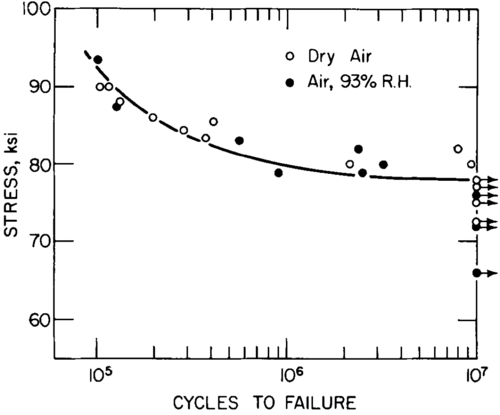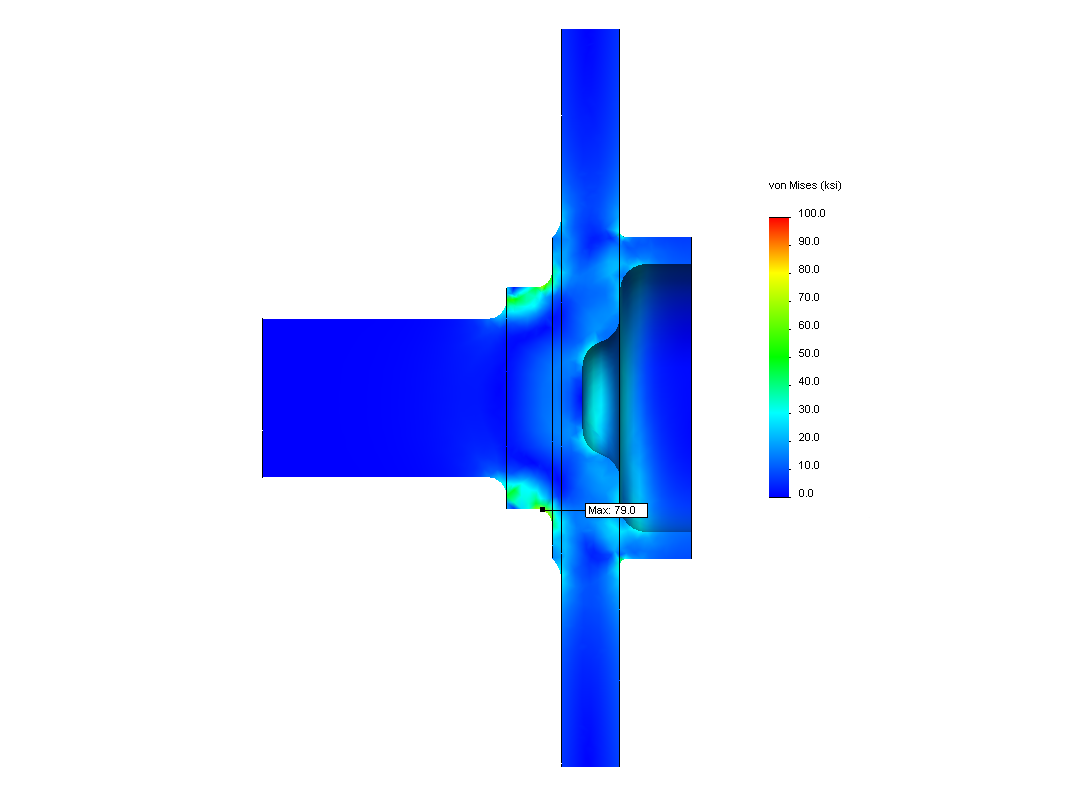If you are serious about tracking your SW20 MR2, the strength of the front hubs is something you should be at least aware of, if not concerned about. This is one that broke on my car at an autocross! What follows is a bit of a deep dive into why they fail, and my solution to the problem.
Pictured above is a hub removed from a 2002-2011 Camry rear wheel bearing unit that I use in my aluminum front knuckles, alongside a stock 91 MR2 hub. I created 3D models of both hubs in order run stress analysis on them. Here they are overlaid so you can see the differences in size and corner radius. It may not look like much more material, but it makes a big difference in strength as you will see below.
Load for this analysis is applied in three ways, all based on the cornering force generated by 1.2g cornering in a 2800lb MR2. The largest source of load on a hub like this is due to the cornering force generated at the contact patch attempting to fold the wheel / tire / hub under the car. This is applied to the hub as a torque about a line running front to rear, perpendicular to the axis of the hub. The torque is calculated using the cornering load with the radius of the tire as the moment arm (1235lb x 12in = 1235ft-lb). The cornering load is also applied as an axial force pushing on the hub (1235lb). In addition to that, an 1100lb vertical load is applied. This is greater than the static front corner weight as at 1.2 lateral g most of the weight has been transferred to the outside wheel. An MR2 will often lift the inside front wheel completely off the ground when cornering hard.
With these loads applied, the stock 91/92 MR2 hub shows a peak stress of just over 93ksi (1ksi = 1000psi). As you might expect, the peak stress is right at the point where they fail. This is where the crack starts, and over time grows until the flange separates from the spindle.
The 2002-2022 Camry hub when subject to the same loading shows a peak stress of 54ksi (a reduction in stress of 42%).
We don't know the precise material that these hubs are made of. But if I had to guess, I would think they would be something along the lines of heat treated 4140 steel, which (depending on the heat treat) might have an ultimate strength of around 160ksi. So, why are they failing? Fatigue. Steel typically has a fatigue strength or "endurance limit" of about 1/2 of their ultimate strength. This is the stress level to which they can be theoretically cycled forever without failure. A part made from a material with 160ksi ultimate strength will have an endurance limit somewhere around 80ksi. Exceed that and the part will eventually fail, given enough cycles.
How many cycles? It depends on by how much you exceed the endurance limit. Typically around 1 million to 10 million cycles is where the fatigue curve flattens for steels. Below is the fatigue curve for an example of 4140, although know that 4140 strength can vary dramatically based on the heat treatment. This is only an example!
For this particular material, 10 million (10^7) (or more!) cycles can be reached if you do not exceed about 78ksi. 1 million (10^6) is about 80ksi, and at 90ksi you only get about 100,000 (10^5) cycles. How many cycles do you need for a part like this? A LOT. A tire in the sort of sizes you will find on an MR2 will turn 800-870 revolutions per mile (depending on the exact size). Every time the hub rotates while under load, the point of peak stress moves around the hub, flexing it back and forth, a condition known as "fully reversed bending". In just 10k miles, the hub will see about 8.5 million cycles!
Now, keep in mind that the loading used here is for a significant cornering load. Driving in a straight line where the only significant load is the vertical one drops the peak stress to only 2.2ksi! And the level of cornering load seen on a street car is MUCH less than that seen on the track. This is why the stock hubs will last pretty much forever on a daily driver, but tend to fail on track cars (endurance racing cars in particular). Also keep in mind that 1.2g is a cornering load that can easily be reached with modern street tires without aero. If you are running r-compound tires and or aero on your track car, loads will be much higher!
Toyota did improve on the stock hub design in the Rev2 (93+) MR2. They added a slightly thicker section around the spindle, and a slightly larger radius, as shown in the picture below. Interestingly, they did this without changing the part number, so if you buy a new hub from Toyota (if they still have any available) you should get the updated design. This change helps, the peak stress for the same loading is reduced from 93ksi to 79ksi. Whether that is enough to prevent breakage depends on the exact material strength (which we don't know), and the use it will see.
From what I have heard from endurance racers, it's not enough.









